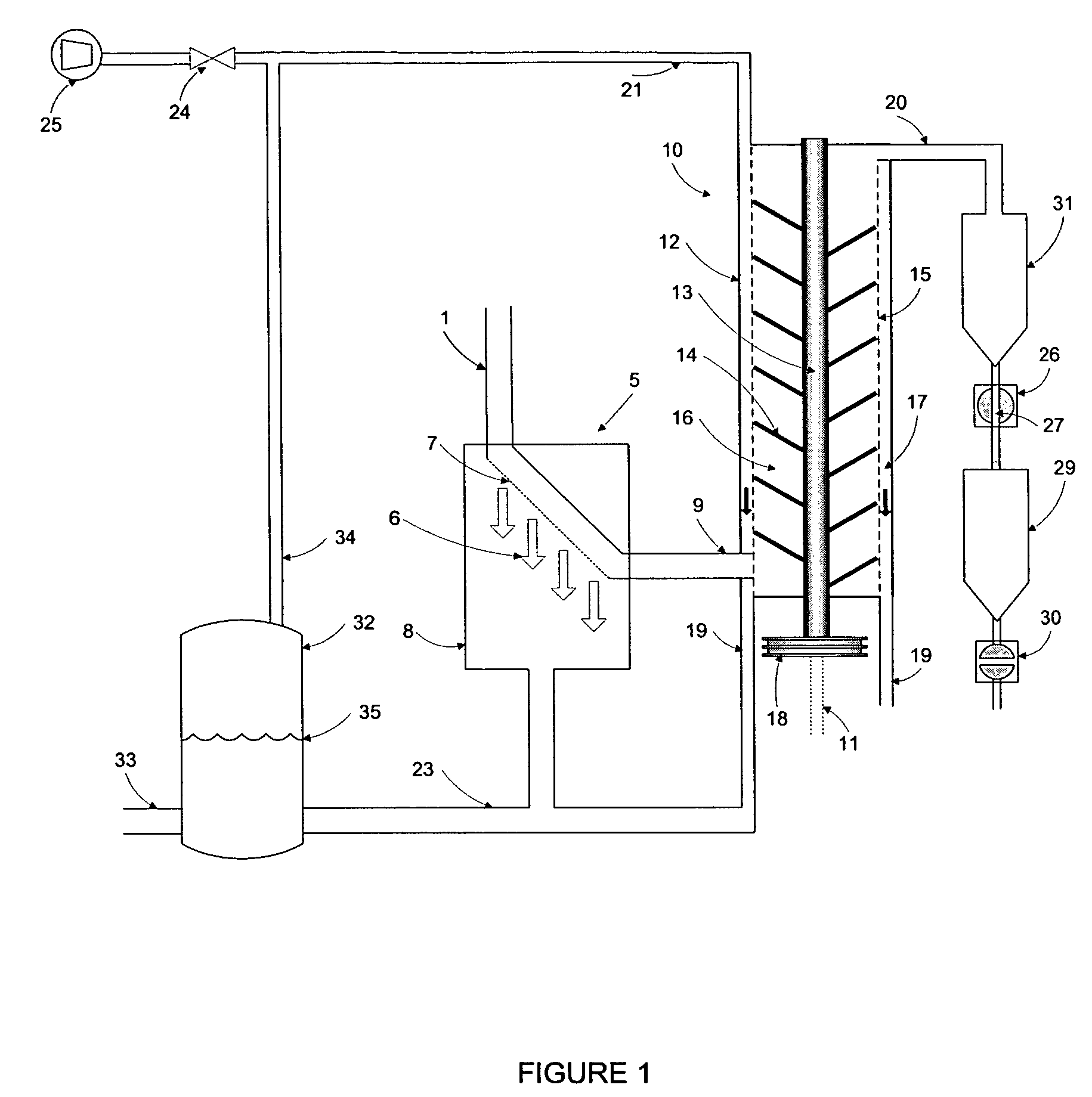Process for separating and drying thermoplastic particles under high pressure
a technology of thermoplastic particles and high pressure, which is applied in the direction of drying solid materials, drying using combination processes, drying machines, etc., can solve the problems of increasing the energy consumption of continuous pressure, crystallization lines, and reducing pressur
- Summary
- Abstract
- Description
- Claims
- Application Information
AI Technical Summary
Benefits of technology
Problems solved by technology
Method used
Image
Examples
working example
[0111]An experiment was carried out with the objective of centrifugally separating and drying a mixture of water and about polyethylene terephtalate (PET) particles crystallized to about 34-37%. The PET-water mixture contained 0.75% by volume of PET pellets and the mixture was heated to a temperature of 165° C. under a pressure of 155 psia. The PET particles were nearly spherical in shape with a diameter of approximately 2.8 mm and their inherent viscosity was 0.80.
[0112]The apparatus consisted of a vertical centrifugal dryer of the type depicted in FIG. 1, running at a rotor speed of 1750 rpm. The PET-water mixture was fed on the side-bottom of the dryer. The water was drained from the dryer to a tank connected to the bottom of the dryer by pipe. The vapor space of the tank and the vapor space of the dryer were connected by pipe in order equalize the pressure between both pieces of equipment. In this pressure equalization pipe high pressure air was injected in order to control the ...
PUM
| Property | Measurement | Unit |
|---|---|---|
| temperature | aaaaa | aaaaa |
| temperature | aaaaa | aaaaa |
| temperature | aaaaa | aaaaa |
Abstract
Description
Claims
Application Information
 Login to View More
Login to View More - R&D
- Intellectual Property
- Life Sciences
- Materials
- Tech Scout
- Unparalleled Data Quality
- Higher Quality Content
- 60% Fewer Hallucinations
Browse by: Latest US Patents, China's latest patents, Technical Efficacy Thesaurus, Application Domain, Technology Topic, Popular Technical Reports.
© 2025 PatSnap. All rights reserved.Legal|Privacy policy|Modern Slavery Act Transparency Statement|Sitemap|About US| Contact US: help@patsnap.com


